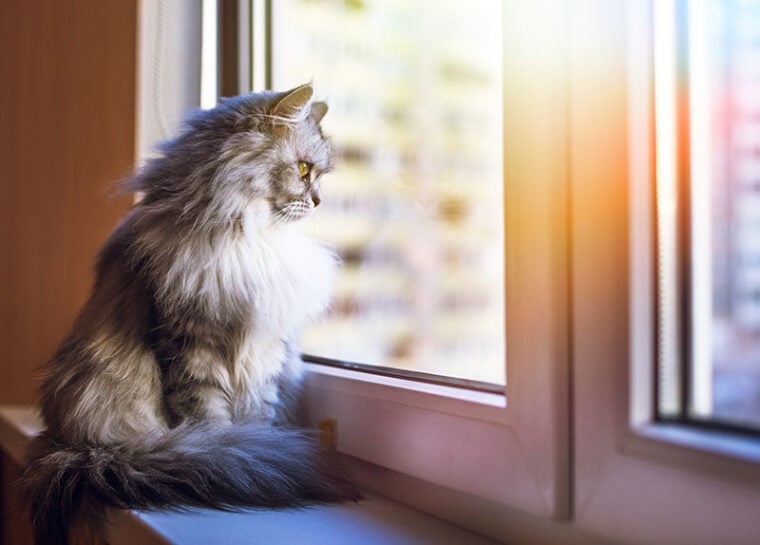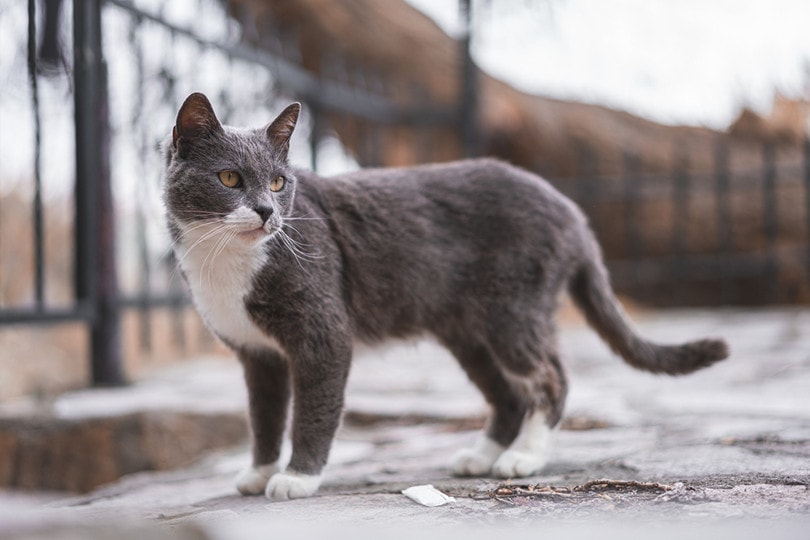
Backed by research, veterinarians agree that cats are safest and live longer when kept indoors. However, some cat owners may consider switching indoor cats to outdoor living due to allergies, behavior problems, or other circumstances. But is it possible for indoor cats to become outdoor cats?
While some indoor cats can become outdoor cats, saving this option as a last resort is best due to the risk. Keep reading to learn how to transition your indoor cat to an outdoor kitty as safely as possible. We’ll also cover some alternative solutions that may help you avoid having to make this switch.
Why Are Cats Typically Safest Indoors?
Compared to indoor cats, outdoor kitties have significantly shorter average lifespans.1 Outdoor cats are vulnerable to several risks not shared by indoor cats, including:
All these dangers contribute to making life harder and shorter for outdoor cats. In addition, outdoor kitties pose a threat to local birds and wildlife. Stray and outdoor cats kill millions of birds and small mammals each year.

Why Would You Want to Move an Indoor Cat Outdoors?
Cat owners may feel their kitties should make this transition for several reasons despite the risks. The most common reason for making the move outdoors is that cats develop behavior problems such as inappropriate urination. Some cats may be bored and restless indoors, frequently displaying bad behavior like scratching furniture, pacing, and vocalizing. Previously outdoor cats may struggle to adjust to life indoors, while others may just want a change of scenery.
Cat owners may also worry that their cat doesn’t get enough exercise indoors or that they aren’t able to perform natural cat behaviors like hunting and climbing trees. If a family member develops cat allergies, there may not be many options other than to move the kitty outside.
How to Transition an Indoor Cat to Outdoor Living
If you need to switch your indoor cat to an outdoor lifestyle, here are some tips to do as safely as possible.

Alternative Solutions to Help Keep Your Cat Indoors
If you feel your cat would benefit from outdoor activity but worry about their safety, consider training them to walk on a leash. Some breeds are more suited for this than others. Another option is to build or buy a “catio” or fully enclosed outdoor space for your kitty.
Before banishing a cat with behavior problems outdoors, talk to your veterinarian about other options. Your cat may benefit from a visit to a behavior specialist or prescription medications.
Although it may not be as exciting as the outdoors, you can provide an interesting and enriching environment for your indoor cat. Indoor cats should have access to toys, scratching posts, and vertical space such as cat trees or shelves. Also, it is important to spend time playing with your cat every day.
If your cat is left alone frequently, consider hiring a pet sitter to play with them during the day. You could also use an interactive pet camera to monitor and talk to your cat or leave the TV or music playing when you go.
Conclusion
As we’ve learned, some indoor cats can become outdoor kitties, but this lifestyle switch also puts them in danger and may harm local birds and wildlife. Before transitioning an indoor cat, work with your veterinarian to ensure you’ve explored every possible solution to keep your cat inside without stress on either of you. Consider providing outdoor access with a leash or catio instead of making the full switch. In some cases, letting a cat live outside is the best solution to prevent them from ending up in an animal shelter or worse.
Featured Image Credit: lkoimages, Shutterstock






